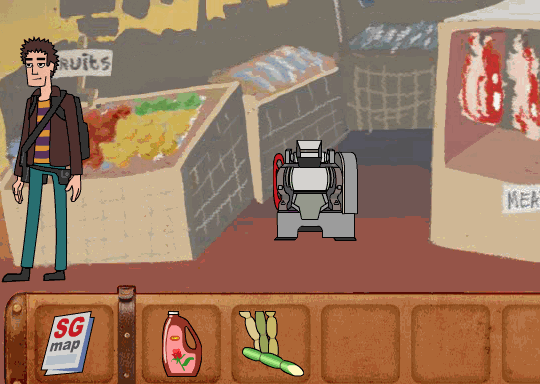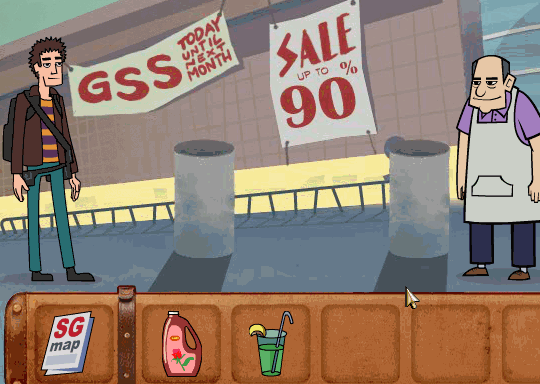


Stranded in Singapore (2011)
Something of a followup to Symon, Stranded in Singapore is another attempt at procedurally generating adventure game puzzles.
The puzzle generator works with a set of building blocks that are used to construct a puzzle map, trying to connect each block with inputs generated from lists of other potential blocks.
Stranded in Singapore has more complex puzzle structures than Symon, with the puzzles themselves generally having logical relationships. Though the character motivations are a bit thin, which makes it less narratively engaging than Symon’s dreamscape. Then, too, narrative stakes are lower: tourism is a lighter subject than confronting regrets and mortality.
I’d argue that the biggest difference is the way that the lore is used: the backstory implied by Symon’s objects is personal, bittersweet, and reflects the character’s past. The lore of the objects in Stranded entirely revolves around exploring Singapore’s real-world culture. Having the player character be a tourist limits his connection to the events, procedurally generated or not. He is just a window for exposition.
Procedural generation isn’t just about how you plug your algorithms together. The narrative context that you present the results within can have a significant effect on the player.
